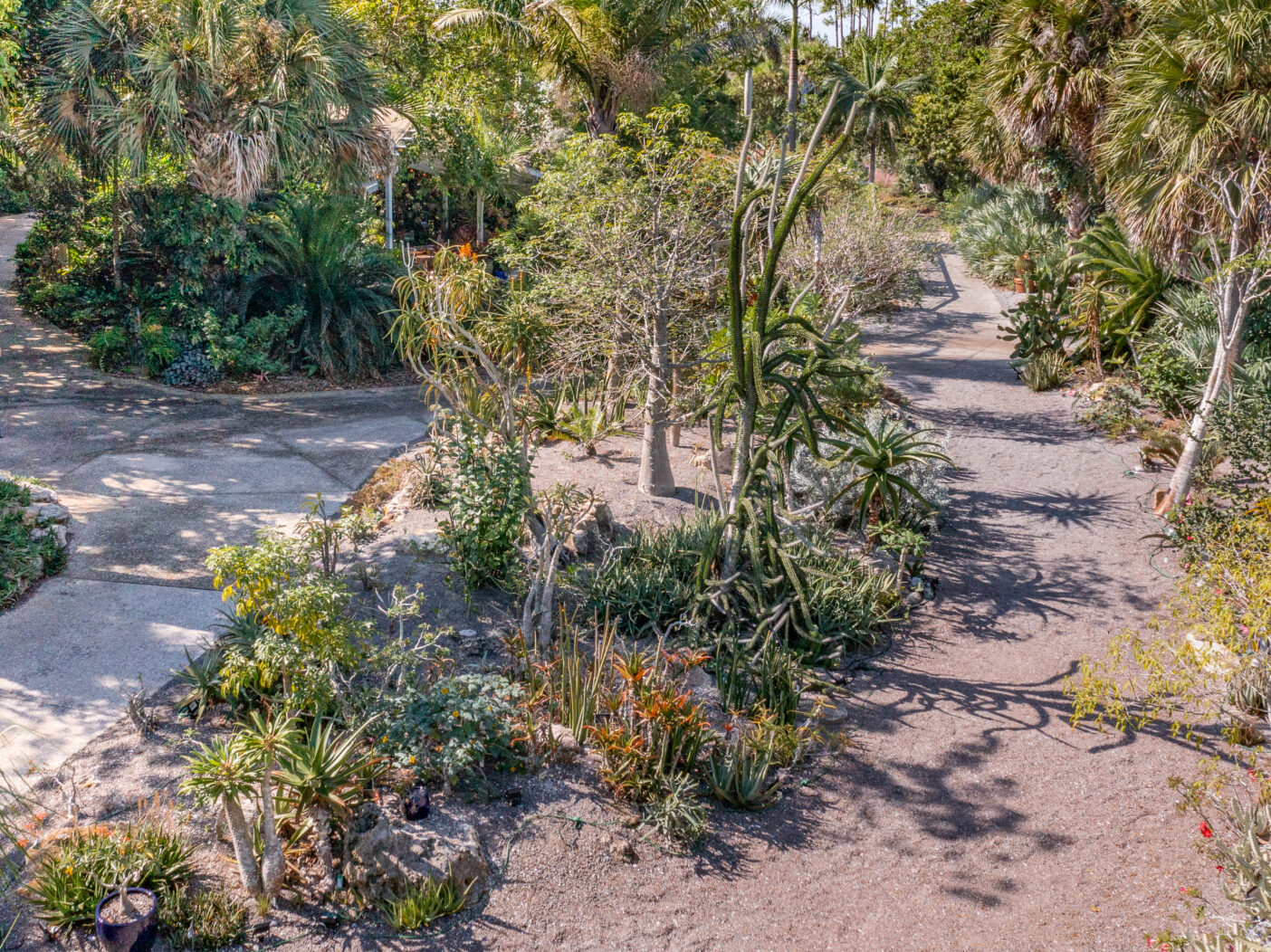
We have gardens reminiscent of Southeast Asia, Brazil, the Caribbean … and Dr. Seussland?
The Foster Succulent Garden — always a place for the botanical world’s weird and wonderful — has doubled in size and is home to a dazzling array of plants that produce sky-high flower spikes, generate nail-sharp spines, store water like camels, grow into twisted contortions, or hover close to the ground in near-perfect orbs. Surely, the esteemed children’s author took inspiration from plants like these.
The transformation happened over the summer, thanks to a gift from Edward and Judith Bergauer and the vision of the Horticulture Team, which created an expansive display of more than 600 succulents, cacti, euphorbias, and other compatible species.
“Succulents aren’t just for the desert,” says Vice President of Horticulture Brian Galligan. Even with Florida’s wet/dry extremes, the plants can flourish when managed correctly. This garden features raised beds and a customized gravel mix to ensure good drainage.
A baobab tree serves as the gateway, and the garden now spans both sides of the path, giving guests a more immersive experience than in the past. The display includes plants from Africa, Madagascar, the Arabian Peninsula, and the Americas. Those who attended last season’s Frida and Her Garden exhibition may recognize plants such as barrel cacti now on permanent display.
Our staff grew many of these plants from seed and have been tending them in our nursery for years. The expansion allows guests to see them for the first time. The large rocks are “homegrown,” too. Many came from the Evenstad Horticulture Campus site; the rest were donated by a local builder. The boulders add texture and dimension.
“Our rocks tell a story,” Galligan says, pointing to a nearly symmetrical circle carved into one. “That’s where a rock swirled around when this was a seafloor.”
Here are a few of the plants you’ll encounter:
“Mousetrap tree”: I told you this garden had zany plants! Uncarina roeoesliana’s seeds are emmeshed in a structure that looks like toy jacks. Each segment has tiny barbs that catch clothes — or fur. (Or fingers, too, so beware.)
Baobab: These giants have been dubbed “upside down” trees because their branches look like roots. Baobabs (genus: Adansonia) are prehistoric plants that can survive for centuries. They are among several species in this garden to have “caudiciforms,” unique, water-storing adaptations that make trunks and stems look like swollen bellies.
Pachypodium: These succulent trees look like they are straight out of Who-ville or Solla Sollew. Director of Collections Nick Ewy describes its looks as a cross between “a plumeria, a cactus, a palm and a baobab” with their swollen trunks.
Sansevieria: These “snake plants” go beyond the familiar “mother-in-law’s tongue” (Dracaena trifasciata) found in so many homes and offices. The Garden recently received a donation of Sansevieria grown by Juan Chahinian, a former Naples resident who wrote the definite guide on the genus, which is also known as Dracaena.
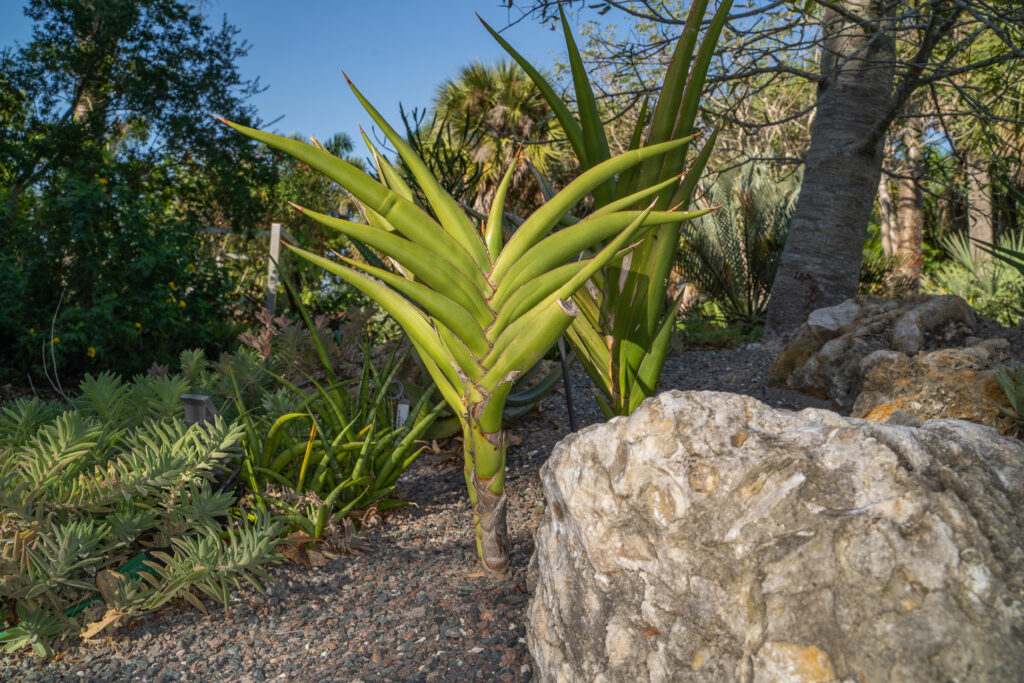
Adenium obesum: The romantic common name, desert rose, is well suited to this flowering plant, which adds pops of color to an arid landscape.
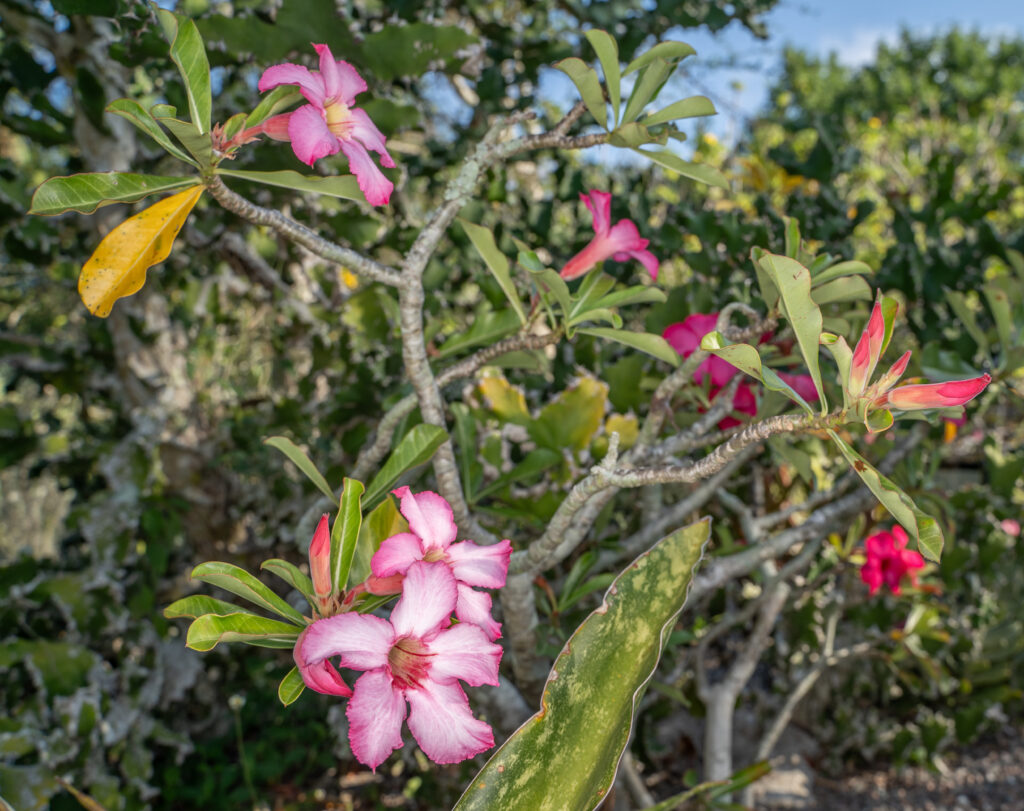
Mangave: These hybrids, relatively new in the horticultural world, are crosses between the Agave and Manfreda genera. They feature the hardiness of Agave and the colors and patterns of Manfreda.
Aloe: If you think these are simply the low-growing plants with sunburn-soothing gel, think again. Aloe barberae is a tree that can grow to 30 feet. And that’s just one unique species. A donor in Venice recently offered the Garden dozens of Aloe types; watch for new arrivals!
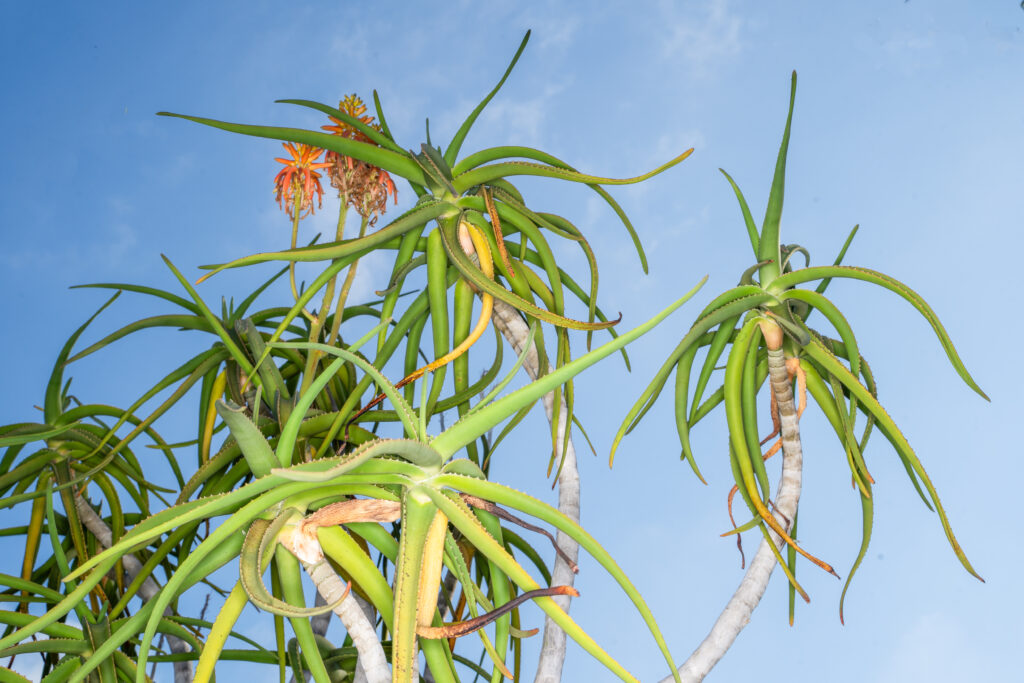
Phyllarthron bernierianum: Proving that not all arid plants are spiny or thick-leaved, these shrubs produce a delicate, pink, trumpet-shaped bloom, reminiscent of Tabebuia.
Bursera microphylla: This species is known as the “elephant tree” because its massive trunk resembles an elephant’s leg or trunk. It’s related to frankincense and myrrh.
Agave: This garden features an array of agave, from the massive blue variety that produces tequila to Agave Victoria-reginae, the Queen Victoria Century plant, with leaves outlined in white.
Euphorbia lactea: This twisting plant is the palest of green — almost white — and, in fact, is dubbed ‘White Ghost.’
Cycad: Cycads are prehistoric cone-bearing plants often mistaken for palms. They are among the world’s rarest and most exploited plants. The Succulent Garden’s expansion provides an opportunity to showcase our growing collection.
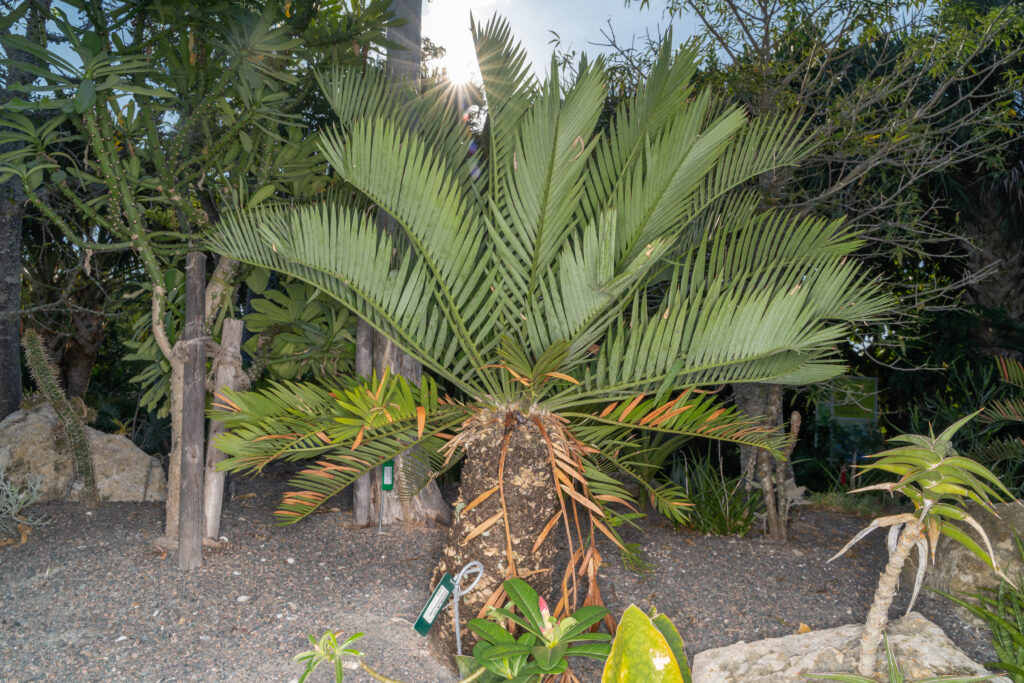

About the Author
Jennifer Reed is the Garden’s Editorial Director and a longtime Southwest Florida journalist.


